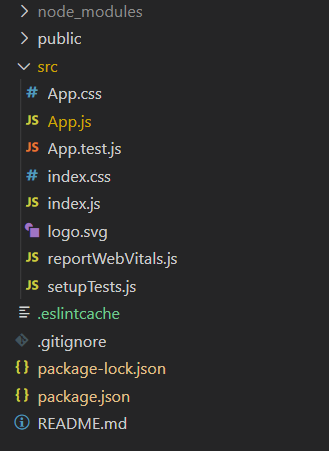ReactJS MDBootstrap Range Component
Last Updated :
07 Jan, 2022
MDBootstrap is a Material Design and bootstrap-based react UI library that is used to make good-looking webpages with its seamless and easy-to-use component. In this article, we will know how to use Range Component in ReactJS MDBootstrap.
The Range component allows users to make selections from a range of values.
Properties:
- className: It is used to add custom classes.
- disabled: It is used to disable the component.
- id: It is used to define an id for the component.
- label: It is used to define label text for the component.
- min: It is used to set the minimum permitted value.
- max: It is used to set the maximum permitted value.
- step: It is used to set the stepping interval.
Syntax:
<MDBRange value={number}/>
Creating React Application And Installing Module:
Step 1: Create a React application using the following command.
npx create-react-app foldername
Step 2: After creating your project folder i.e. foldername, move to it using the following command.
cd foldername
Step 3: Install ReactJS MDBootstrap in your given directory.
npm i mdb-ui-kit
npm i mdb-react-ui-kit
Step 4: Import the element to be used in the project.
import { MDBRange } from 'mdb-react-ui-kit'
Project Structure: It will look like the following.

Step to Run Application: Run the application from the root directory of the project, using the following command.
npm start
Example 1: This is the basic example that shows how to use Range Component.
App.js
import React, { useState } from 'react';
import { MDBRange } from 'mdb-react-ui-kit';
export default function App() {
const [id, setRange] = useState(40);
const geeks = (e) => {
setRange(e.target.value);
}
return (
<div id="gfg">
<h2>GeeksforGeeks</h2>
<h4>ReactJS MDBootstrap Range component</h4>
<MDBRange
value={id}
id='customRange'
onChange={geeks}
/>
</div>
);
}
|
Output:

Example 2: In this example, we will know how to use disabled property in a Range component.
App.js
import React, { useState } from 'react';
import { MDBRange } from 'mdb-react-ui-kit';
export default function App() {
const [id, setRange] = useState(40);
const geeks = (e) => {
setRange(e.target.value);
}
return (
<div id="gfg">
<h2>GeeksforGeeks</h2>
<h4>ReactJS MDBootstrap Range component</h4>
<MDBRange
value={id}
disabled
id='customRange'
onChange={geeks}
/>
</div>
);
}
|
Output:

Example 3: In this example, we will know how to use the min, max, and steps property in a Switch component.
App.js
import React, { useState } from 'react';
import { MDBRange } from 'mdb-react-ui-kit';
export default function App() {
const [id, setRange] = useState(20);
const geeks = (e) => {
setRange(e.target.value);
}
return (
<div id="gfg">
<h2>GeeksforGeeks</h2>
<h4>ReactJS MDBootstrap Range component</h4>
<MDBRange
min='10'
max='50'
step='5'
value={id}
id='customRange'
onChange={geeks}
/>
</div>
);
}
|
Output:

Reference: https://mdbootstrap.com/docs/b5/react/forms/range/
Like Article
Suggest improvement
Share your thoughts in the comments
Please Login to comment...